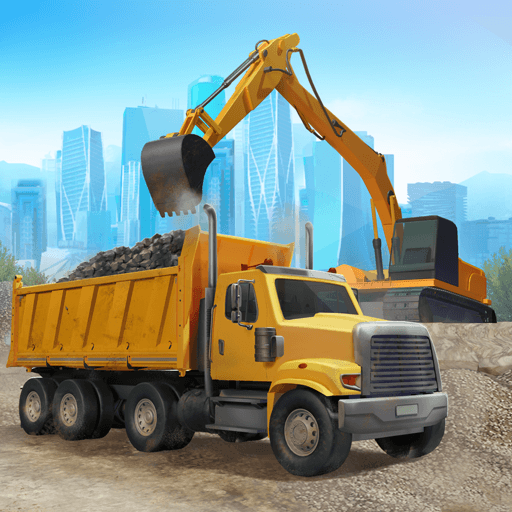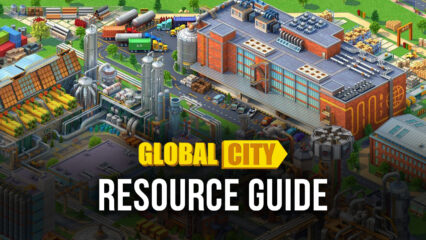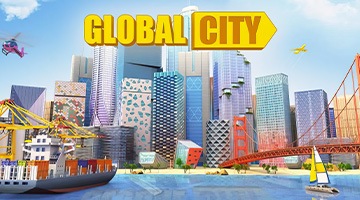How to Build the Perfect Town in Global City: Build and Harvest
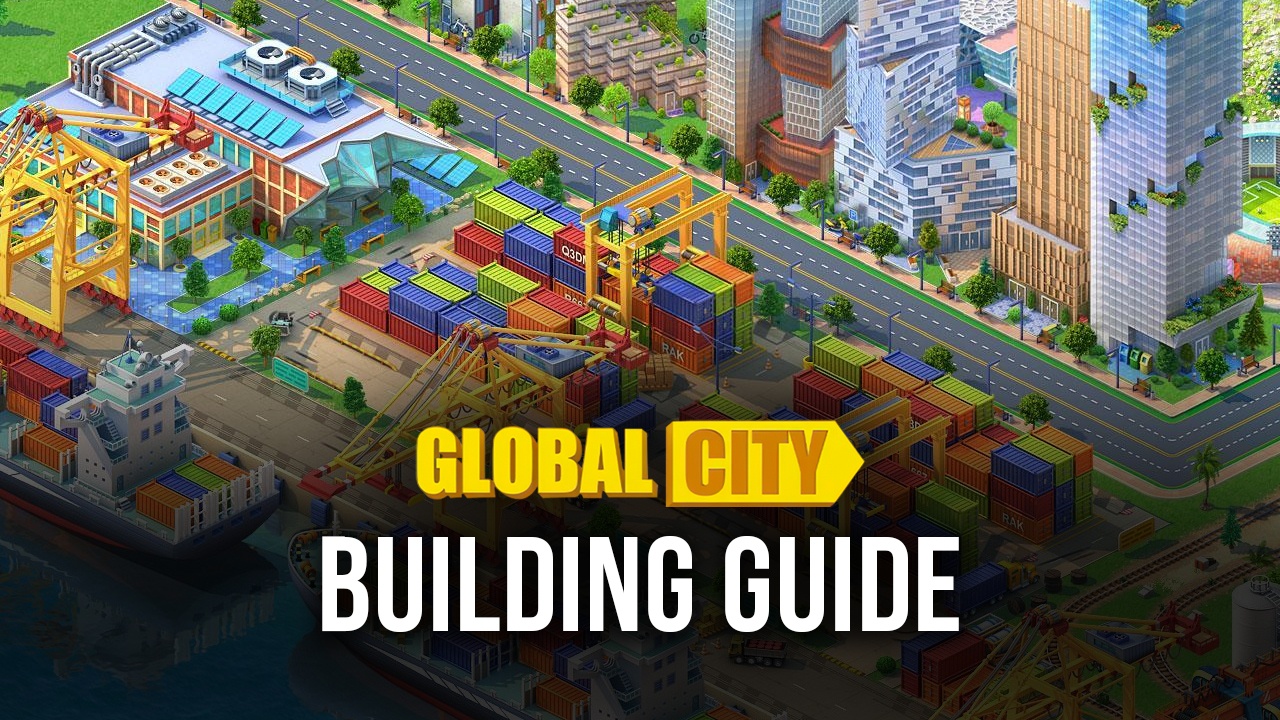
Building the perfect metropolis in Global City: Build and Harvest isn’t a goal that can be achieved in a few days. It takes a lot of time to build it up from a humble town to a city filled with countless structures that serve as proof of the effort they made into doing so. The common instinct in many of the fans of the city management genre is to look at other players’ cities and appreciate how they designed them to look both functional and aesthetically pleasing. Although, many players need to learn before doing so.
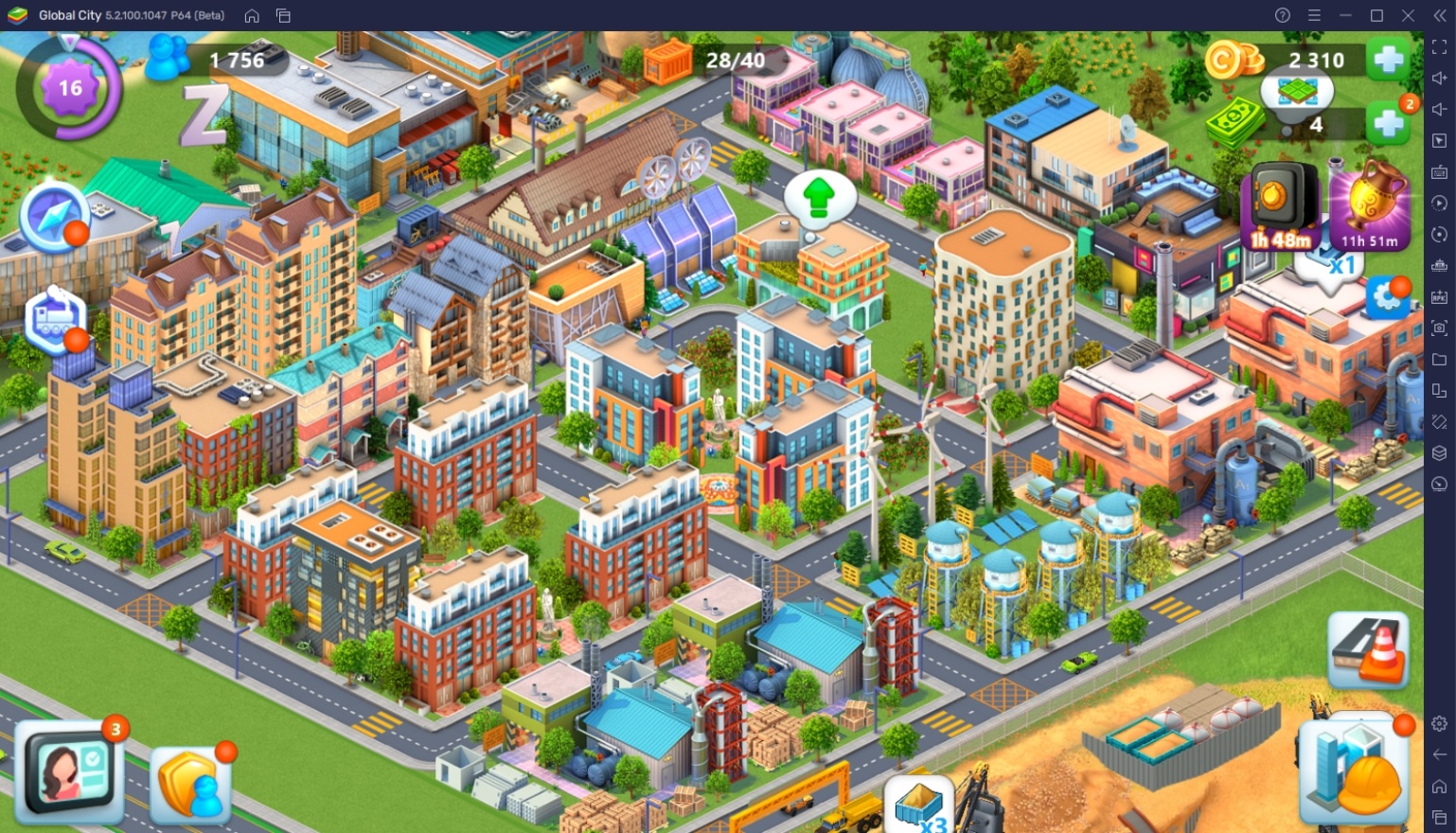
It takes a lot of time and resources to create your bustling metropolitan. One of the resources that players will most likely use up while playing the game is coins, so make sure to check out our Global City Coins Guide to learn more about how you can earn this resource quickly. Once you’ve learned how to create the necessary resources that you need to play the game, it’s time to learn the differences between the buildings and why they are integral parts of your city.
Residential & Commercial Buildings
Residential and commercial buildings go hand-in-hand in Global City and are considered the primary structures that players need to survive. While all the other structures have essential roles, these two building types give your city a sense of identity. It is also highly likely that your city will be made up almost entirely of these two buildings types. Luckily, there are many options to choose from depending on what you need in your city to make it prosper even more.
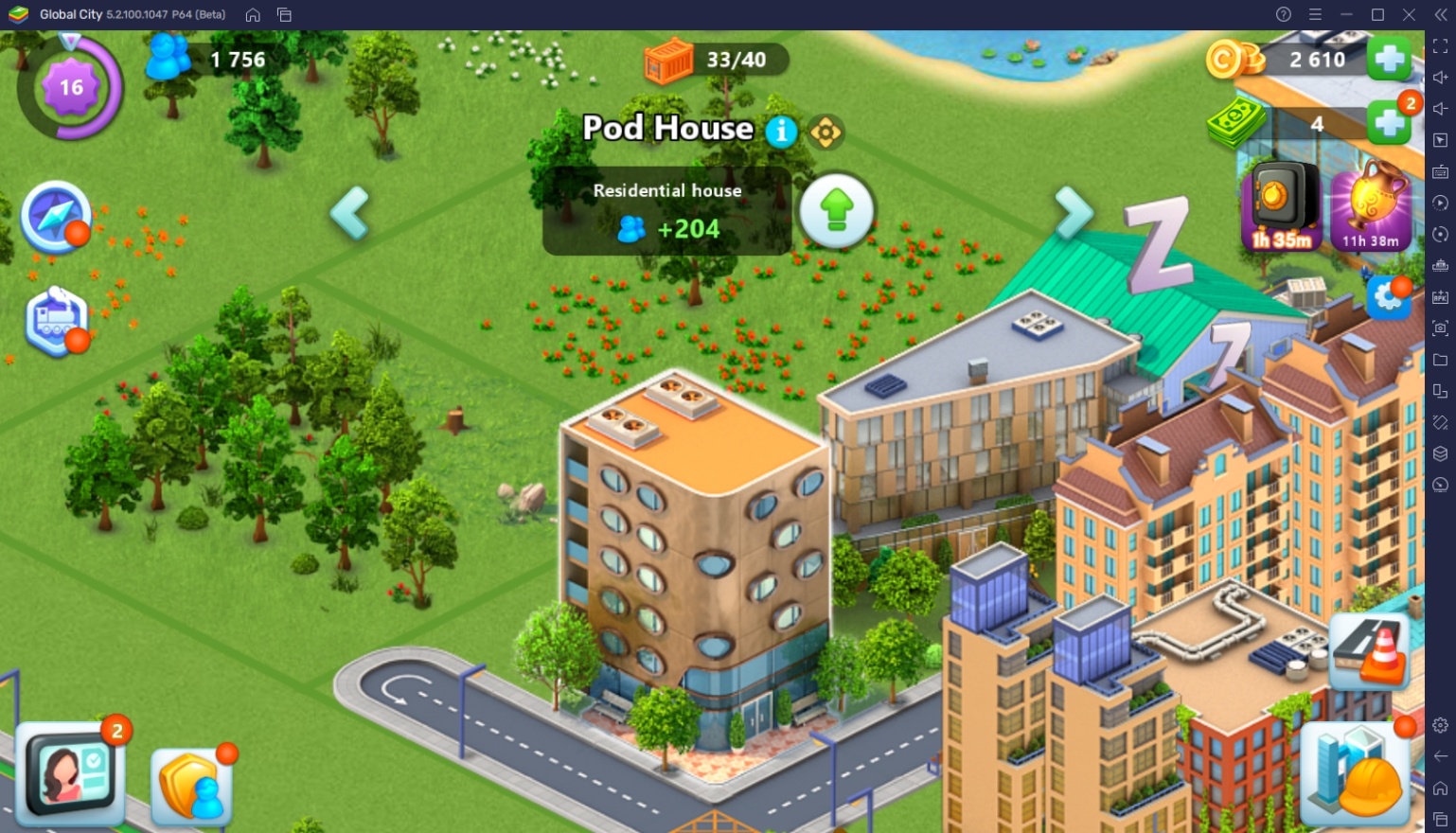
Residentials give rise to population, a resource needed to supply commercial buildings with employees. There are also other functions that are unlocked when increasing your population, so make sure to keep your numbers growing. Commercial buildings provide coins, a resource used in almost everything in Global City. Remember that all building types consume electricity and water and need to be connected to a road to function, so keep those in mind when constructing them.
Factories
Factories are the buildings that players will most likely be interacting with the most. These building types create manufactured goods using raw materials or other components. The manufactured goods are either shipped out or used to construct different structures around your city. The primary purpose of factories is to give the player an option to play the game using interesting game mechanics and learn how to manage the resources that they’ll need to make the city prosper.
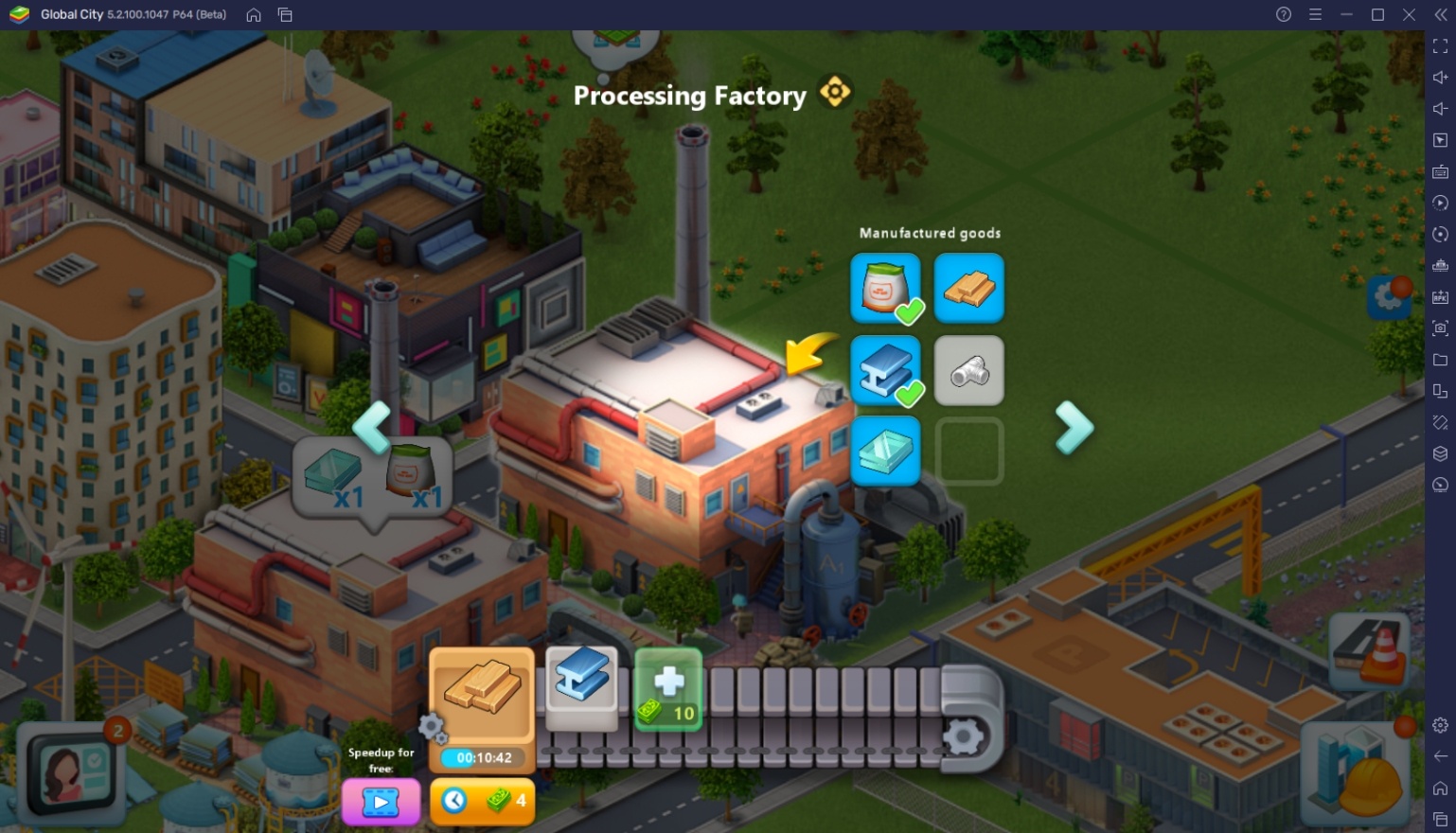
Players often have very few factories, with the number of slots in each factory being limited. This prevents players from mass-producing items using minimal effort, so they are forced to continuously manufacture products manually. Players can either increase the number of production slots or create more factories to make it easier to manufacture goods. However, patient players don’t need to do so because they can manually input their orders now and then.
Utilities
Utilities refer to water and power plants. These are essential to keep all your other buildings running and functional. Without these buildings, all your other structures will fail to do their tasks, and your city will be left doing absolutely nothing. It’s ideal that players always keep their utility production at least on the yellow bar so that they don’t have to worry about accidentally constructing a building that will cause a massive power outage or water shortage in the city.
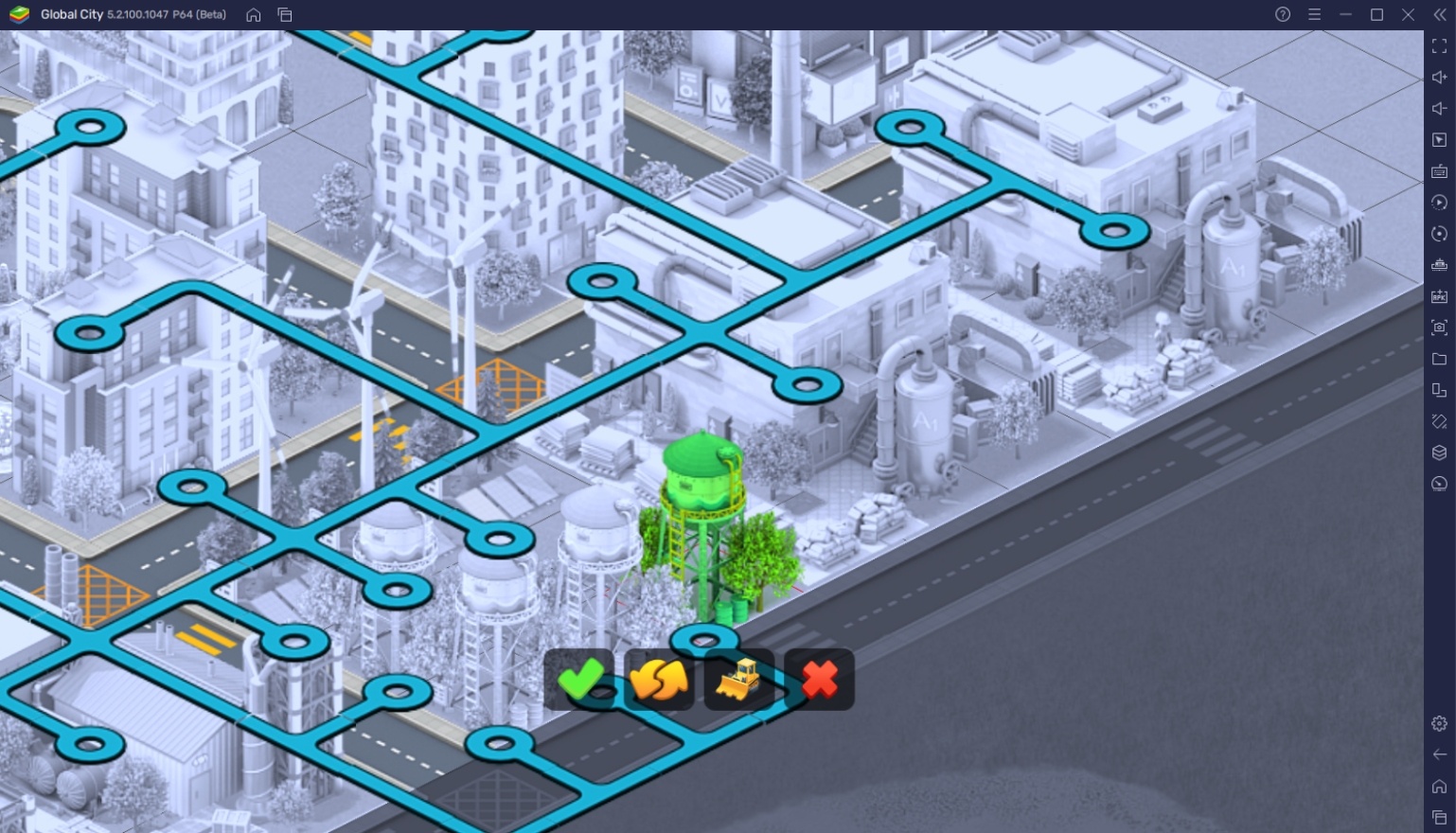
It’s recommended that players upgrade utilities by replacing old models with newer ones instead of building more utility structures. This is because utility buildings consume a lot of space, especially lower-level facilities that produce very little energy or water. It’s not ideal for a city to have too many utility structures because the area is much rather spent on building new residential or commercial buildings because they benefit your city more than having a bunch of utilities.
Amenities
Amenities are the final piece of the puzzle and are usually mistaken as mere decorations. In truth, amenities play an essential role in your city because they boost the performance of your residential buildings by increasing the population. These are incredibly important because buildings don’t always have a uniform shape, so you’ll often encounter gaps in-between areas that you can use to build amenities on. In the early stages of the game, you don’t have to showcase amenities since they serve a more practical use.
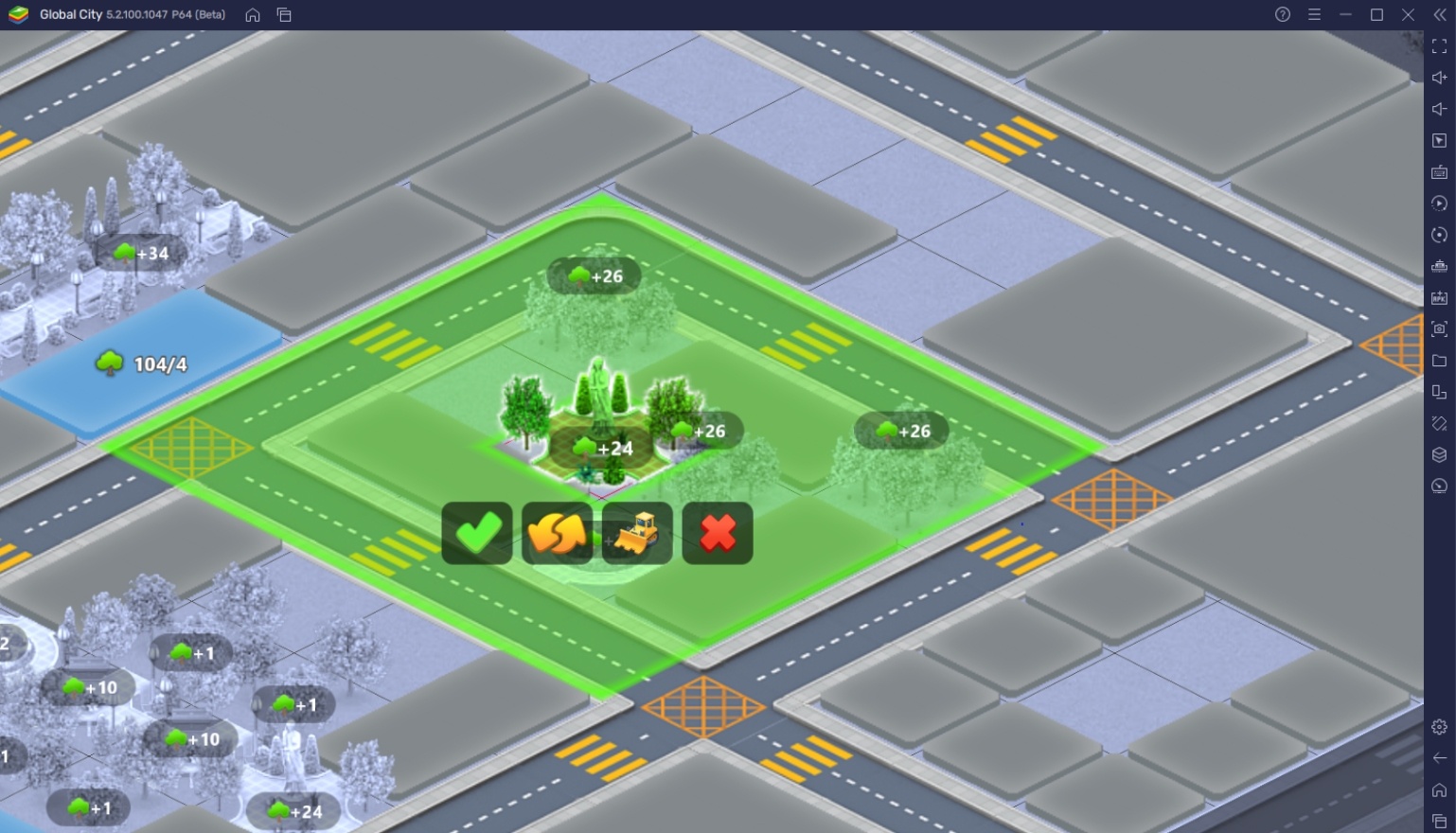
There are many amenities, with some taking more space to provide a more significant bonus. If you’re a beginner who’s just trying to earn enough coins to expand your city and level up, you should always aim for amenities that don’t take up a lot of space because they are more efficient even though they don’t provide a significant bonus. This is because you’d always instead use the area to build more residential and commercial buildings. After all, they help your city prosper a lot faster.
Constructing Roads
The construction of roads is the final piece that will help you build a prosperous city. Many people underestimate how important it is to lay out their roads because they believe that since it’s free, they can simply place roads whenever they way or destroy them if they make a mistake. Roads determine how much space you have and are often the ones that take up so much room in the city that players aren’t efficiently meeting the required number of residential and commercial buildings.
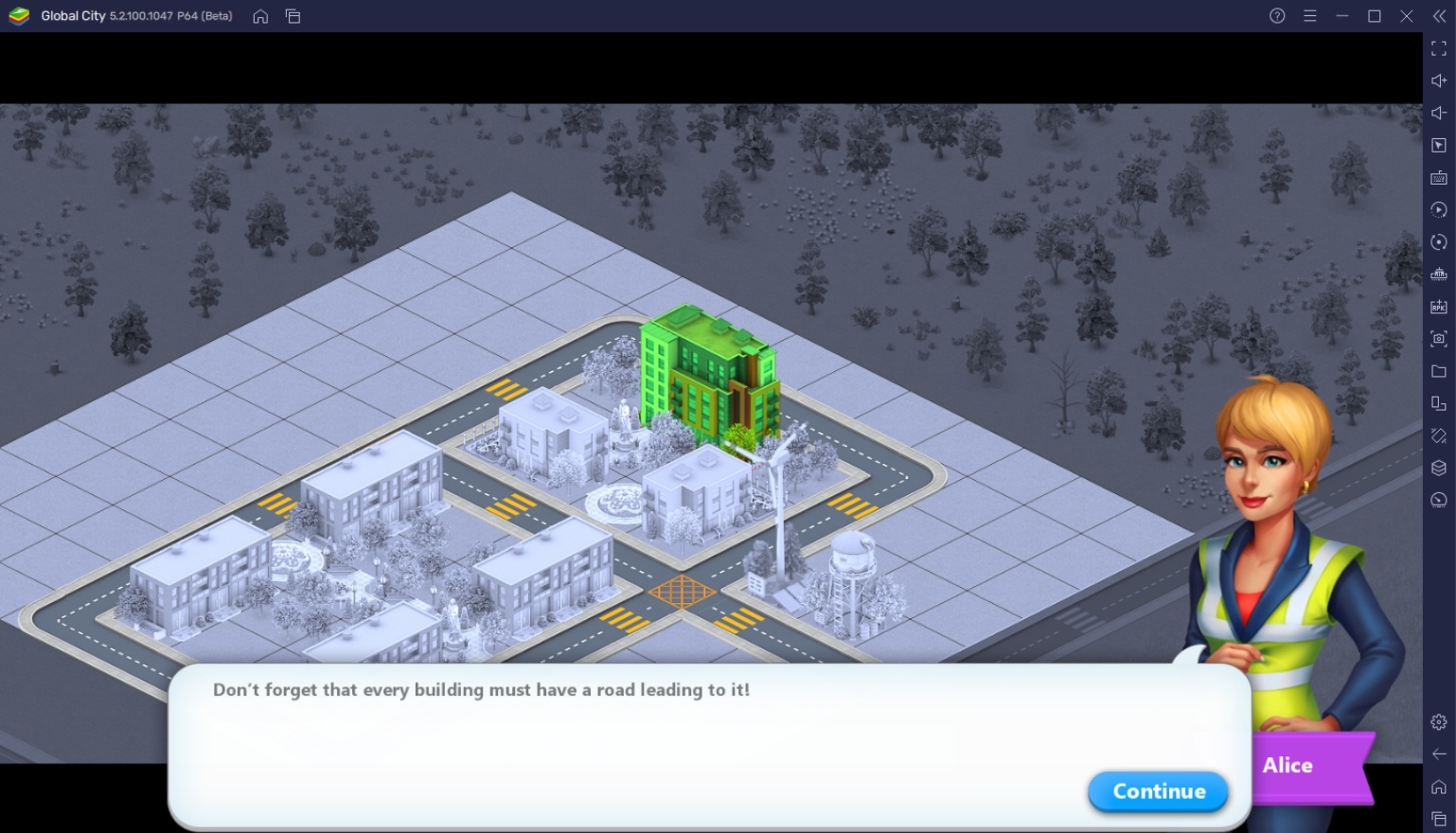
When laying out roads, it’s important to plan which type of buildings you want to have. It’s ideal to leave spaces between roads to support at least five buildings in a 2×3 setting. (2×3 is not the size of a single building but the number of buildings in a space) This allows the player to maximize the usage of roads without sacrificing aesthetic appeal and functionality. After all, it’s not good to have a cluttered base where all of your structures are placed in random places inside the city.
